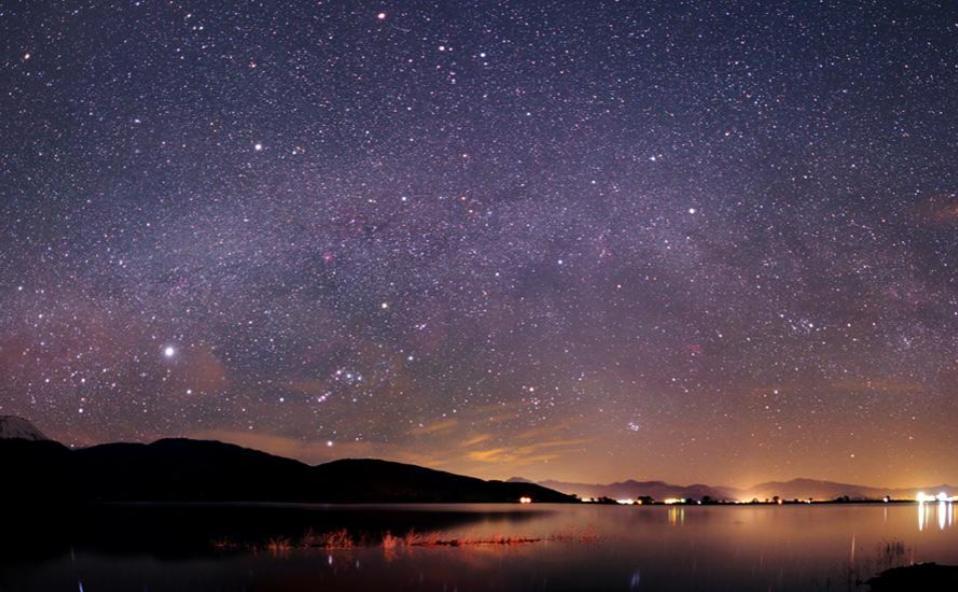About 13 times each century, the planet Mercury can be seen to pass directly across the face of the Sun in an event we call a “TRANSIT.” Such an event last happened in May 2016, and it will happen again on November 11th.
Mercury is the most difficult of the “naked-eye” planets to see because it is small and its orbit never takes it far away from the Sun from our line of sight here on Earth. Mercury gets bright but it is only seen in twilight skies to the right of the Sun before dawn; or left of the Sun after sunset. It always lies low to the horizon even at its best.
To observe this transit sky-watchers need to use eye protection, just as if they were observing an eclipse of the Sun. So that means solar eclipse viewing glasses, which are safe viewers for looking at the Sun. These can easily be ordered on-line. But since Mercury is so small, binoculars should be used to spot it crossing the surface of the Sun. Thus this means looking through them with the solar viewing glasses. With the un-aided eye, Mercury disk will be very small and hard to see.
The transit event starts at 7:35 am EST on the morning of November 11th, and ends at 1:04 pm EST. Mercury will appear to move across the Sun from left to right. Try to prepare to see this event, because it will not be until May of 2049 when another Mercury transit will be visible in North America.
Venus pops back into view just after sunset in November in the western sky. This sets up a remarkable conjunction with Jupiter on November 24th. After the Sun and the Moon, Venus is the next brightest object in the sky, and may be seen this month 30 to 60 minutes after sunset in the western sky.
Jupiter, the 4th brightest sky object, will be seen some 10 degrees above Venus on November 14th. The gap between the 2 planets narrows each day until November 23rd and 24th when they will only be one degree apart; Venus just below Jupiter!
On November 28th, a slim, crescent Moon will join the show, appearing just above and left of the two planets.
Saturn, fainter than either Venus or Jupiter, is well above both and visible for several hours in the west after sunset. The crescent Moon will be near Saturn twice this month; on November 1st and again on November 29th. Astronomers recently announced the discovery of 20 more moons orbiting Saturn. This brings Saturn’s moon total to 82; the most of any planet in the solar system!
Standard time returns for us on November 3rd. Sky-watchers will notice sunsets occurring an hour earlier than the week before this, which means the night sky arrives earlier for us to enjoy.
One of the best meteor showers of the year, the Leonids, which often produces brilliant “fireballs,” peaks this year on November 18th. But the waning gibbous Moon will provide enough light to make seeing these meteors difficult. Still, looking east before dawn that Monday morning we may be rewarded with a smattering of the bright meteors that the Leonids are famous for having.




Write a Letter to the Editor on this Article
We encourage readers to offer their point of view on this article by submitting the following form. Editing is sometimes necessary and is done at the discretion of the editorial staff.